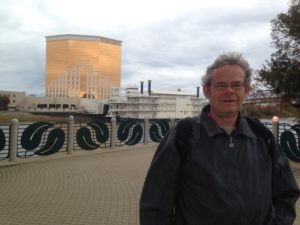Shenandoah Valley (Dec. 11 -14)
We decided to spend our first day in Shenandoah at the Luray Caverns. What a great choice!
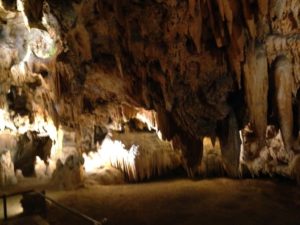
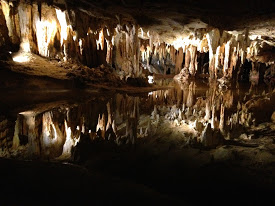
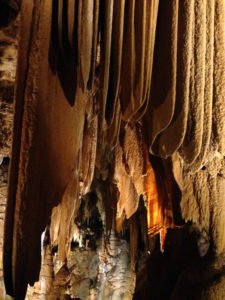
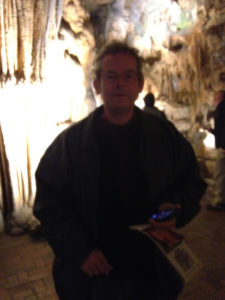
The Luray Caverns are the most spectacular caverns that Chuck and I have seen together (including other trips). The minute you enter the cave, you are surrounded by amazing rock formations: stalactites and stalagmites, pillars, draperies, grape-like formations, cave “bacon” and more. A guide takes you on a 1 mile hike through this wonderland, which includes a mesmerizing reflective pool (above, left) and formations of all sizes.
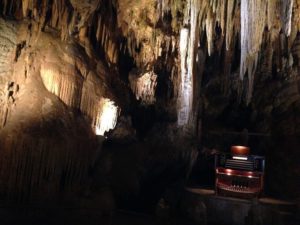 A unique feature of the cavern in the Stalagpipe Organ. This is an xylophone, whose keys are stalactites. It is controlled by this “organ”, but the keys activate the little hammers as can be seen in the center of the picture below.
A unique feature of the cavern in the Stalagpipe Organ. This is an xylophone, whose keys are stalactites. It is controlled by this “organ”, but the keys activate the little hammers as can be seen in the center of the picture below. 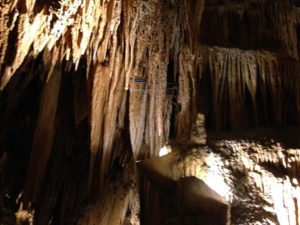 It is an amazing instrument, but I do worry that the constant vibration of the formation will lead to crystal fatigue and ultimately damage to the cave.
It is an amazing instrument, but I do worry that the constant vibration of the formation will lead to crystal fatigue and ultimately damage to the cave.
Luray is only a 4 hour drive from State College, and I highly recommend this to my SC friends. However, you do have to be able to manage several flights of stairs to see this cavern.
As well, the attraction has 3 museums, all very good.
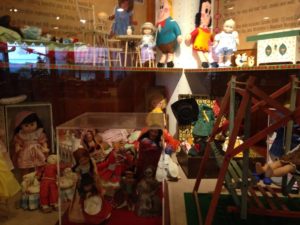 The toy museum has displays of toys from America’s past, with some discussion of how the toy evolved. e.g. doll heads used to be made of bisque (a type of ceramic) so their hair used to be either painted on or wigs. Once plastic heads were developed, synthetic hair could be “rooted” in the scalp.
The toy museum has displays of toys from America’s past, with some discussion of how the toy evolved. e.g. doll heads used to be made of bisque (a type of ceramic) so their hair used to be either painted on or wigs. Once plastic heads were developed, synthetic hair could be “rooted” in the scalp. 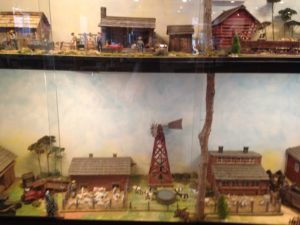 On the other hand “talking” dolls were available in 1890. The centerpiece of the display was a large model train set, which was well-done but less interesting to me. However, there was also a model train set (right) that had been entirely hand-crafted by a pediatrician out of balsa wood which I found very interesting.
On the other hand “talking” dolls were available in 1890. The centerpiece of the display was a large model train set, which was well-done but less interesting to me. However, there was also a model train set (right) that had been entirely hand-crafted by a pediatrician out of balsa wood which I found very interesting.
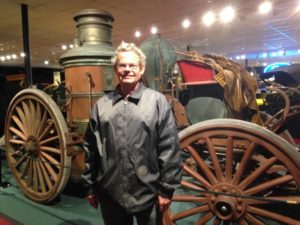
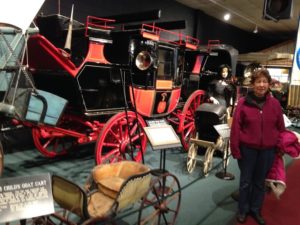 The car museum had the best collection of antique vehicles we have yet seen, including a horse drawn fire truck with a steam-powered water pump (left) and many unique carriages, coaches, sledges, carts and buggies. The stage cage below could hold 20 passengers + luggage (although most of the passengers sat on the outside at roof level. This photo also shows a child’s cart which was pulled by two goats (the small white vehicle) and a woman pushing a vintage baby carriage. The museum also had a fine collection of very old luxury cars, many with wooden chassis and leather and brass trim and car motors. Finally, it had a lot of interesting miscellanea.
The car museum had the best collection of antique vehicles we have yet seen, including a horse drawn fire truck with a steam-powered water pump (left) and many unique carriages, coaches, sledges, carts and buggies. The stage cage below could hold 20 passengers + luggage (although most of the passengers sat on the outside at roof level. This photo also shows a child’s cart which was pulled by two goats (the small white vehicle) and a woman pushing a vintage baby carriage. The museum also had a fine collection of very old luxury cars, many with wooden chassis and leather and brass trim and car motors. Finally, it had a lot of interesting miscellanea.
The last museum is the Luray Valley Museum, which is a historical museum. It has some unique exhibits. Apparently the Shenandoah Valley, besides being a big agricultural area, was a big iron-producing area, producing cast-iron stoves. Since these were shipped around the country, first by Connestoga wagon and then by train, the stoves needed to be shipped in pieces and then assembled upon delivery – the IKEA of its time. The museum had a large display of stove panels from various models, and with discussion about the decorative as well as functional features.
Many of the settlers in the valley were German Anabaptists. One interesting artifact is an anabaptist bible dating from 1536. In Europe, this bible was considered heretical, and being caught carrying this book could lead to very serious consequences (including death).
Another interesting note in the museum concerned Stonewall Jackson, a famous Confederate general who led the Confederate forces in the Shenandoah Valley. Before the war, Jackson and his wife both taught school to slave children (which was illegal at the time) along with another woman who was a staunch abolitionist. (The display was actually about her life.) During the war, she was imprisoned by the Confederates for supporting the Union, but Jackson effected her release. The local high school is named after him and it will be interesting to see how it fares in the current controversy about honoring Confederate heroes.
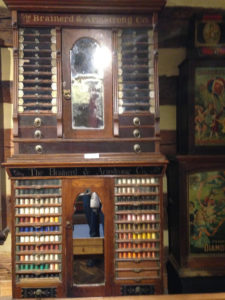 The museum also had a small display of very old toys and of quilts. I liked this cabinet for embroidery and quilting thread that was used for store display.
The museum also had a small display of very old toys and of quilts. I liked this cabinet for embroidery and quilting thread that was used for store display.
As well, the museum has a number of restored historic buildings including a house, schoolhouse and smithy.
To get to Luray, we had to cross the mountains through a low pass through the Massanutten Mountains. We did not want to cross this after dark, which is about 5 p.m. so we headed back early and went into the small town of New Market. We ended up having an early dinner at Kathy’s Cafe – a small and friendly restaurant downtown.
By the time we got back to the RV, it was windy, snowy and very cold. Nonetheless, Rumple seemed to want multiple walks. One advantage of home – a backyard where he can go out without supervision (although on a rope).
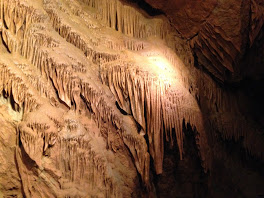
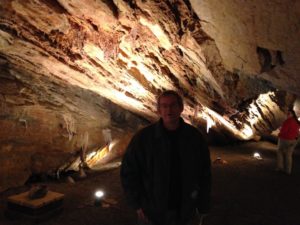
For our second day in Shenandoah, we visited the Shenandoah Caverns, which also have a number of side attractions. The caverns are less ornamented than the Luray Caverns, but are interesting in other ways. The caverns are full of natural passageways, and the rocks themselves are very interesting. Often you are walking beneath huge slabs of rock so smooth they look like they have been finished by a rock smith. In other places, there are huge shattered boulders balancing on the cave floor or between the walls. One large cavern was at the junction of two underground rivers, and the cavern walls have been scoured in great eddies.
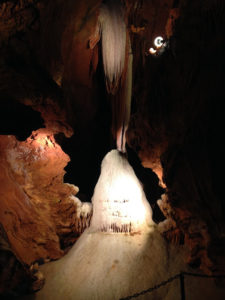
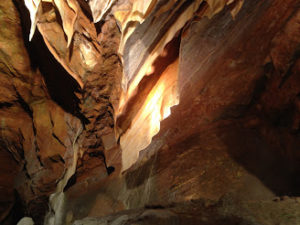
The cavern has fewer big pillars than Luray, but lots of cave draperies and cave bacon (above). Some of the formations have an outer crust of crystalline calcite, which makes them glitter like something out of a fairytale.
The old entrance to the cave was by steps, but this has been replaced by an elevator. Because of this, the hike is less strenuous than Luray. However, several of the natural rock passageways, although wide, are less than 5′ high, so some ducking is required.
After the tour, we had lunch at the adjacent cafe, which is a 1950’s lunch counter. It looked just like the lunch counter that my stepgrandmother used to run in a small town in Ontario, except that the linoleum counter and the stools were green instead of red. We were the only customers, so the manager stopped to talk with us.
Patty has worked at the caverns for 30 years, through several owners. She was originally hired as a tour guide when her first child was only 2. Her husband thought she was going a bit stir-crazy in the house, and when her cousin, at the time the only guide, told her that they were hiring a second guide, she went in for the interview. She continued to guide through 2 pregnancies. She also works in the gift shop and manages the cafe. This is the first year the cafe has been open after Labor Day – it was quite busy up until Thanksgiving, but was very quiet when we were there. However, the cafe also served lunch up to the staff, so perhaps it will survive the winter slow-down.
Patty told us about the ownership and management of the caverns since the 1950s, as well as some of the history of the main building. The most interesting thing is that not only the ownership, but also the management, has stayed within families (one for the owner, another for the management).
The former owner, E. Hargrove, was part of a family business which did large-scale decorations such as Inaugural Day Parade floats, and department store Christmas windows. There is a large museum called American Celebrations on Parade, which houses many of the historic floats. Unfortunately, because of the heating bill, it is not open in the winter.
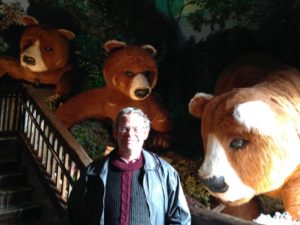 The main building houses a display of department store animated figures. When I was a child, the big department stores in Toronto were Eatons and Simpsons.
The main building houses a display of department store animated figures. When I was a child, the big department stores in Toronto were Eatons and Simpsons. 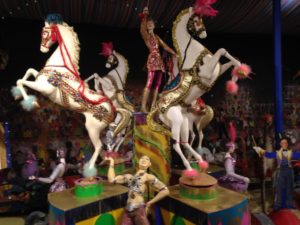 They were on opposite corners of two of the downtown streets, Yonge and Queen. Every Christmas, after the Santa Claus parade, they would convert their street-side display windows to large animated displays of fairy-tales, nursery rhymes or children’s songs.
They were on opposite corners of two of the downtown streets, Yonge and Queen. Every Christmas, after the Santa Claus parade, they would convert their street-side display windows to large animated displays of fairy-tales, nursery rhymes or children’s songs. 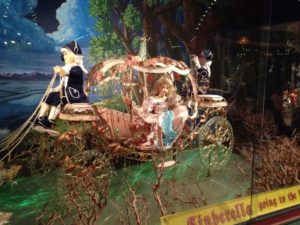 We always made a special trip downtown to see these displays. The “Main Street of Yesteryear” exhibit was a small selection of these animations, including Cinderella, a huge 3-ring circus that was once a Macy’s display, a castle, and more. As for the displays in Toronto – Simpsons and Eatons are no more, and the street-level shops have been replaced by the Eaton Centre, which is mostly underground (and much warmer at Christmas).
We always made a special trip downtown to see these displays. The “Main Street of Yesteryear” exhibit was a small selection of these animations, including Cinderella, a huge 3-ring circus that was once a Macy’s display, a castle, and more. As for the displays in Toronto – Simpsons and Eatons are no more, and the street-level shops have been replaced by the Eaton Centre, which is mostly underground (and much warmer at Christmas).
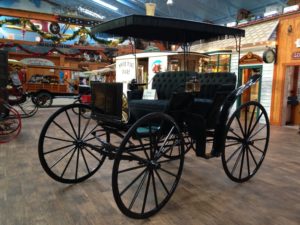
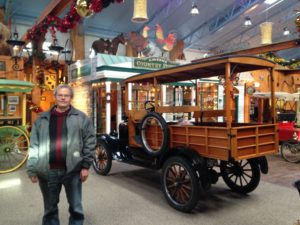
The final exhibit on the grounds is the Yellow Barn, which houses many old buggies, cars, carts and sledges, as well as other antiques such as an old barbershop.
Entrance to the 3 above ground exhibits is free, so perhaps we will stop back another time to see the American Celebration museum
Just down the street from the caverns, and from our campground, is the Route II Potato Chip Factory. Here you can watch most of the process of making potato chips from washing the potatoes, to slicing, to frying, inspecting, the fried chips, seasoning, bagging, and even boxing the bags (although photos are not allowed). Much of the process is automated (e.g. there is a device that can slice 100 lb of washed and peeled potatoes into chips in less than a minute) but the boxing is done by hand. I am assuming that this is due to the fragility of the product. Interesting factoid: 100 pounds of raw potatoes converts into 25 lbs of chips – the rest goes up in steam as the chips fry. Peelings and chips that do not pass inspection (before seasoning) are sold to a local farmer as cattle feed.
A fun part of the visit is that you can sample the product. They had about 10 flavors out for tasting. The chips were really good, but this is the wrong stage of our trip to be stocking up, so we did not become customers. Based on the numbers of boxes stacked up in the loading bay, and the number of tractor trailers heading in and out, our business will not be missed.
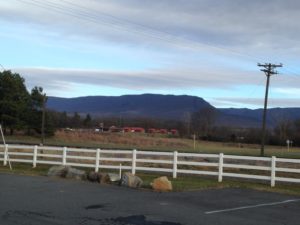 The views from both Shenandoah and Luray Valleys is lovely. This is the ridge and valley system, and the mountain ridges go on for miles. Here is the view looking towards the campground.
The views from both Shenandoah and Luray Valleys is lovely. This is the ridge and valley system, and the mountain ridges go on for miles. Here is the view looking towards the campground.
This is the last day of our trip. Tomorrow we will be home.
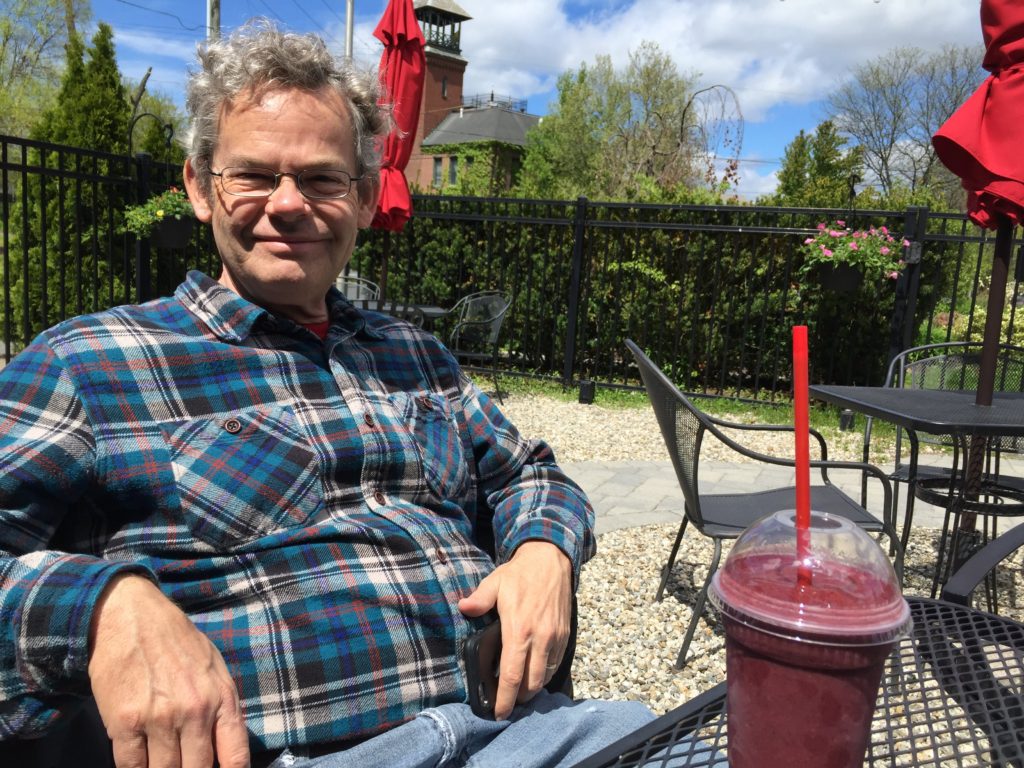
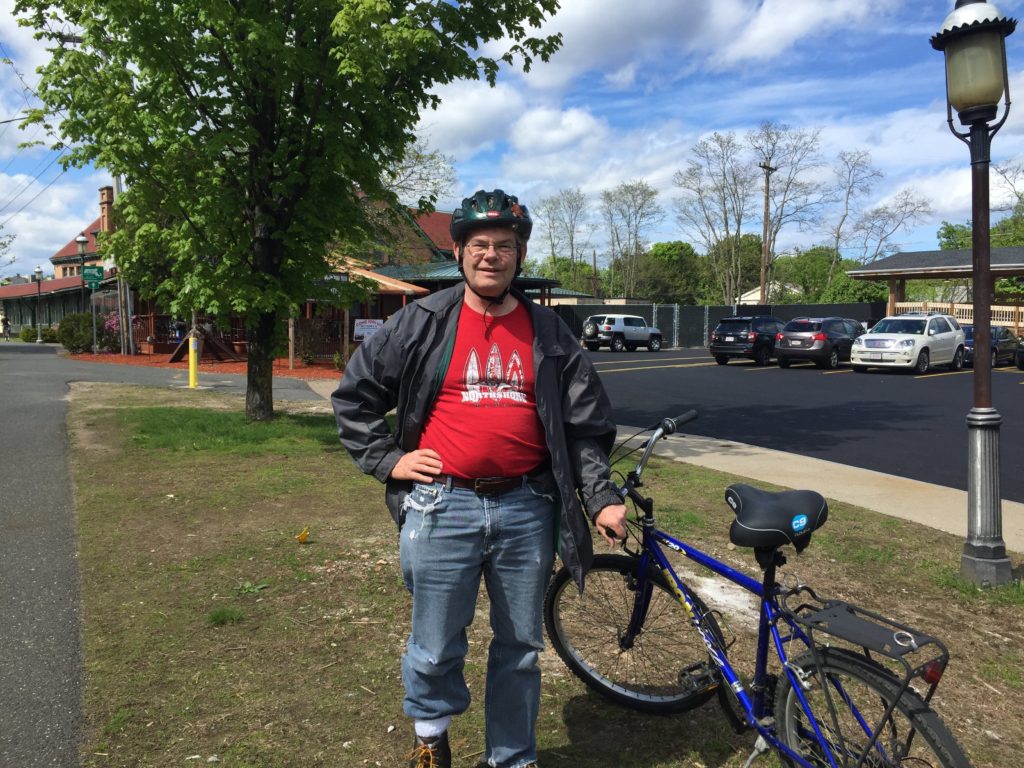
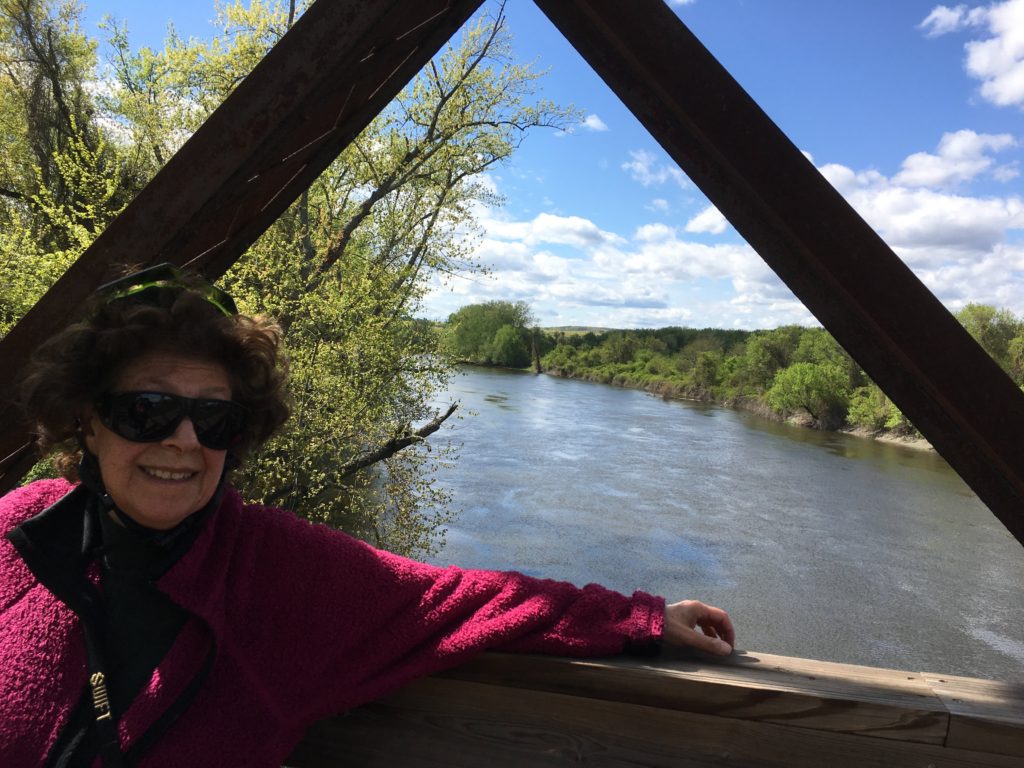
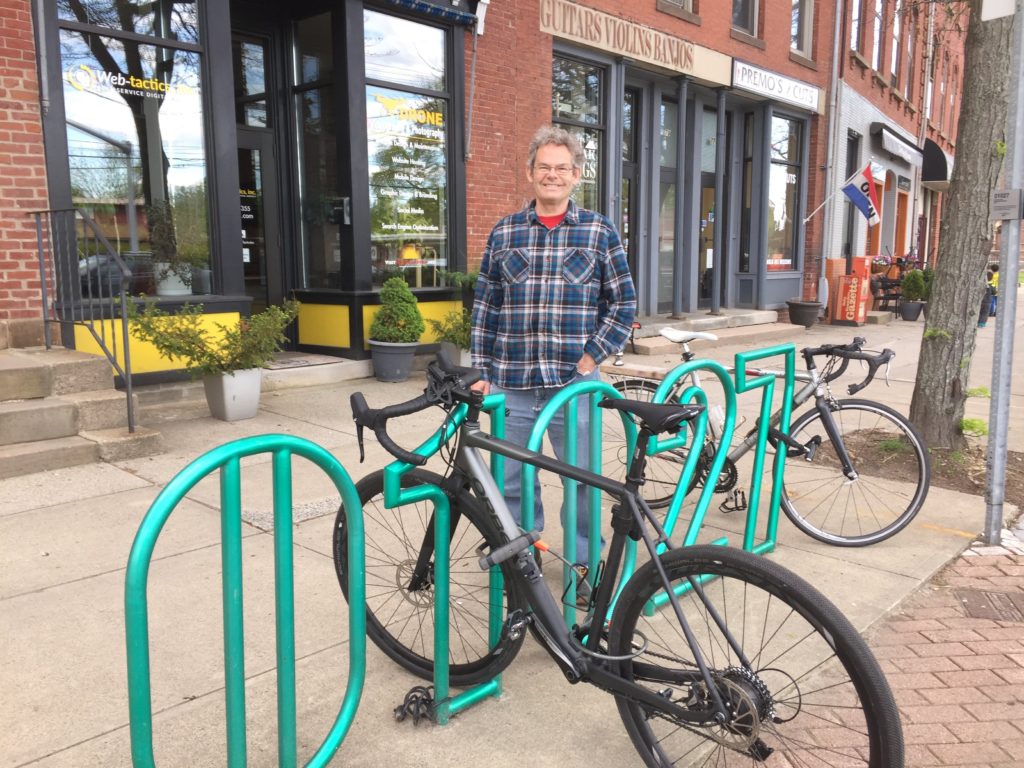
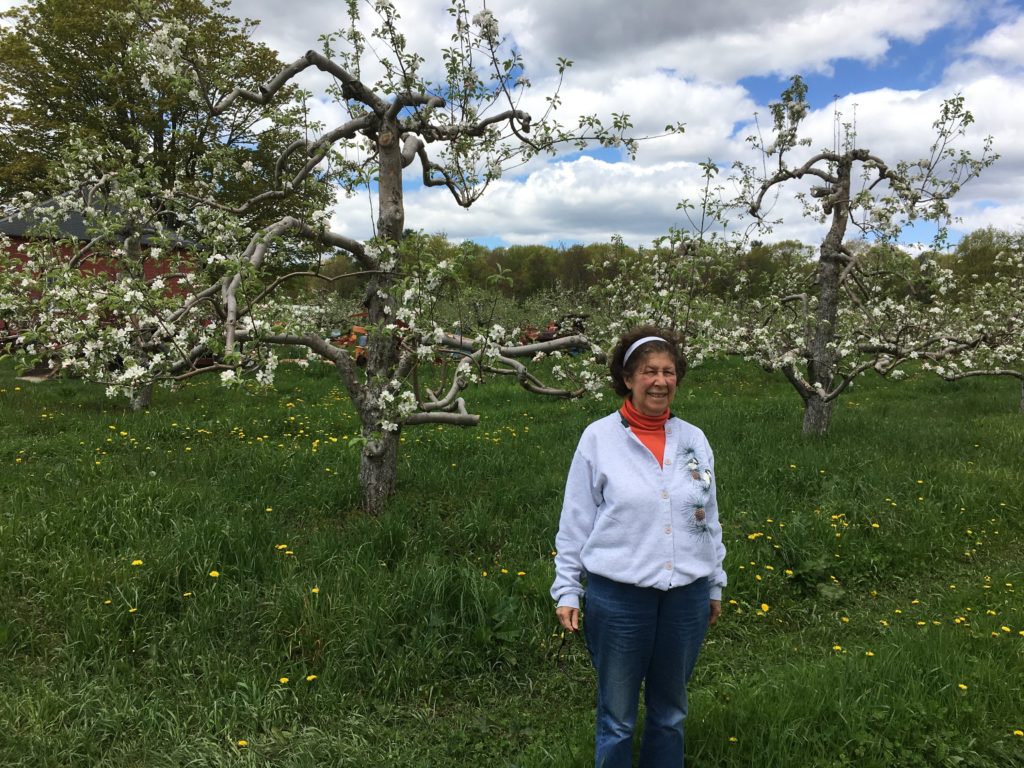
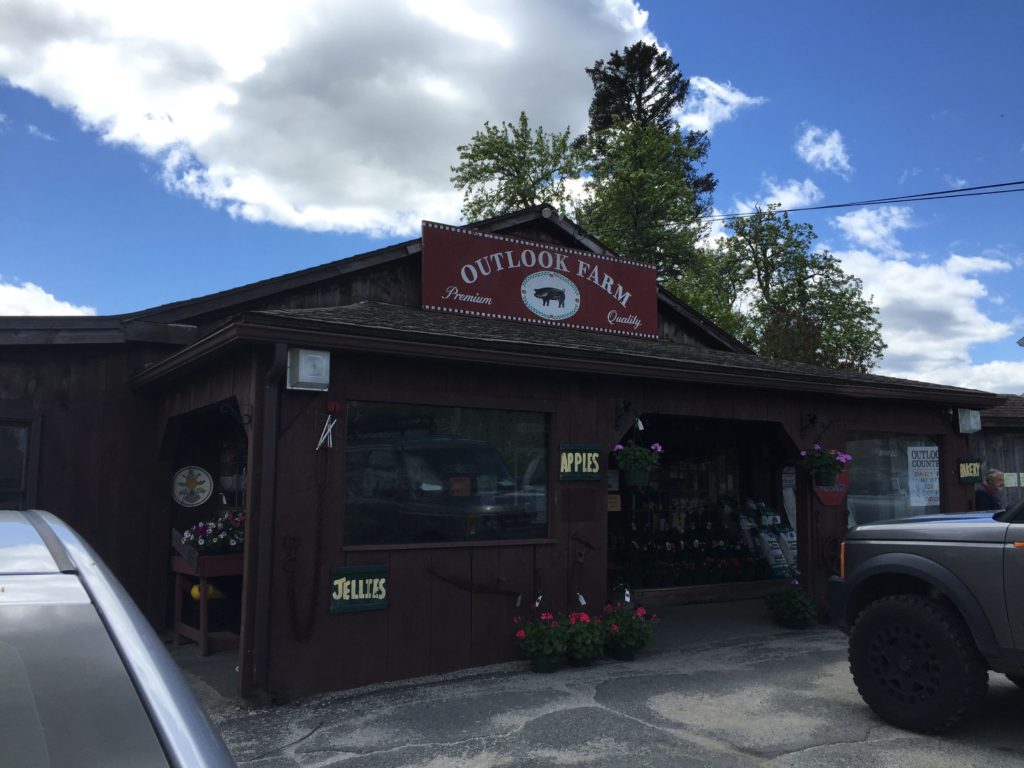
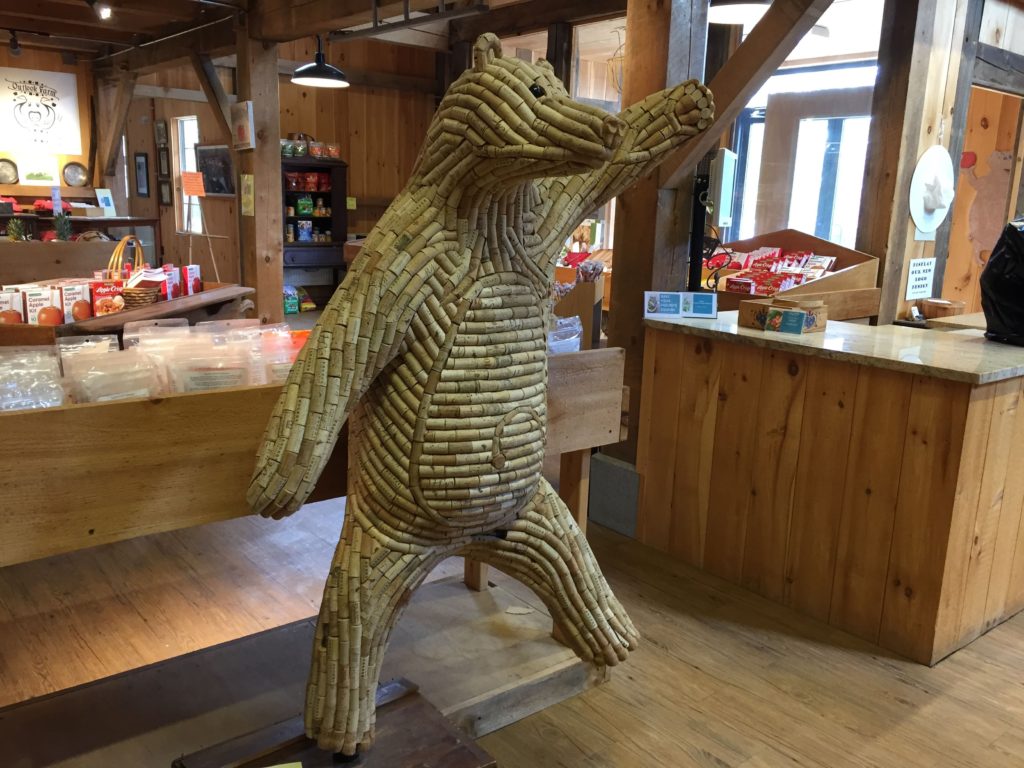
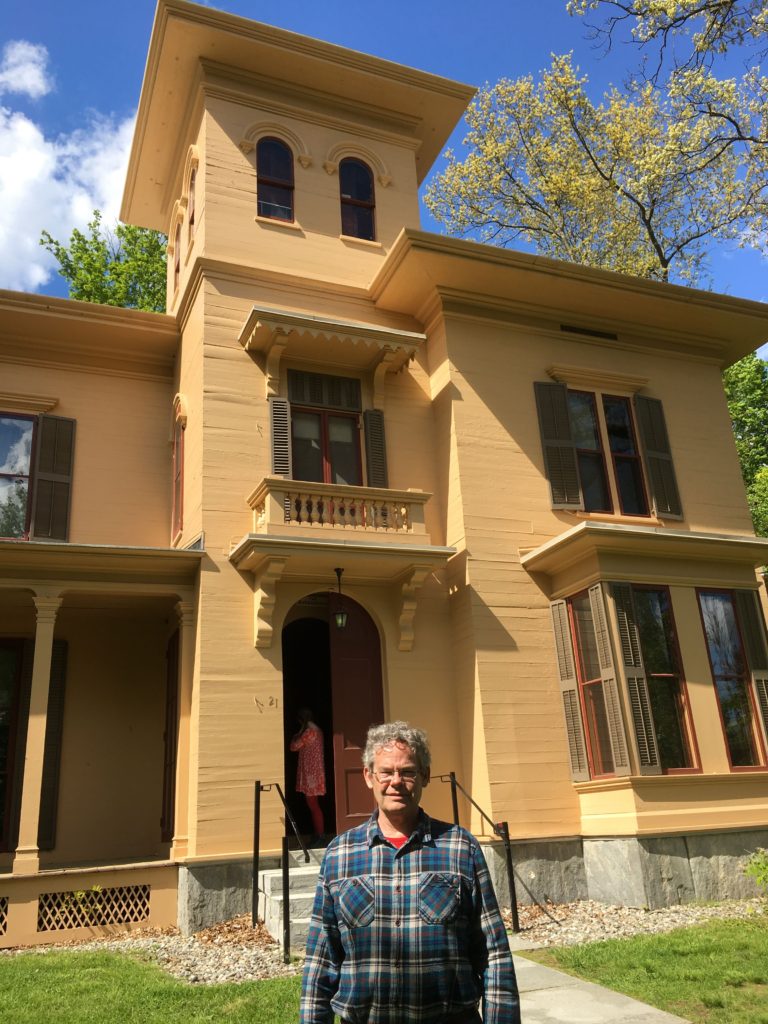
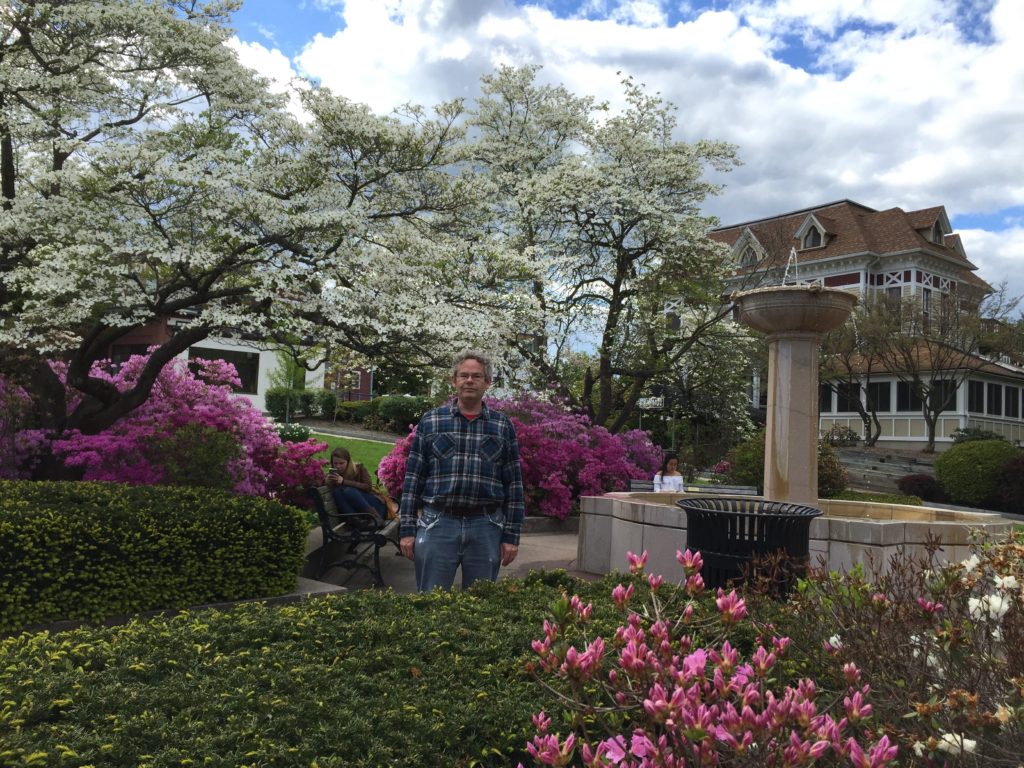
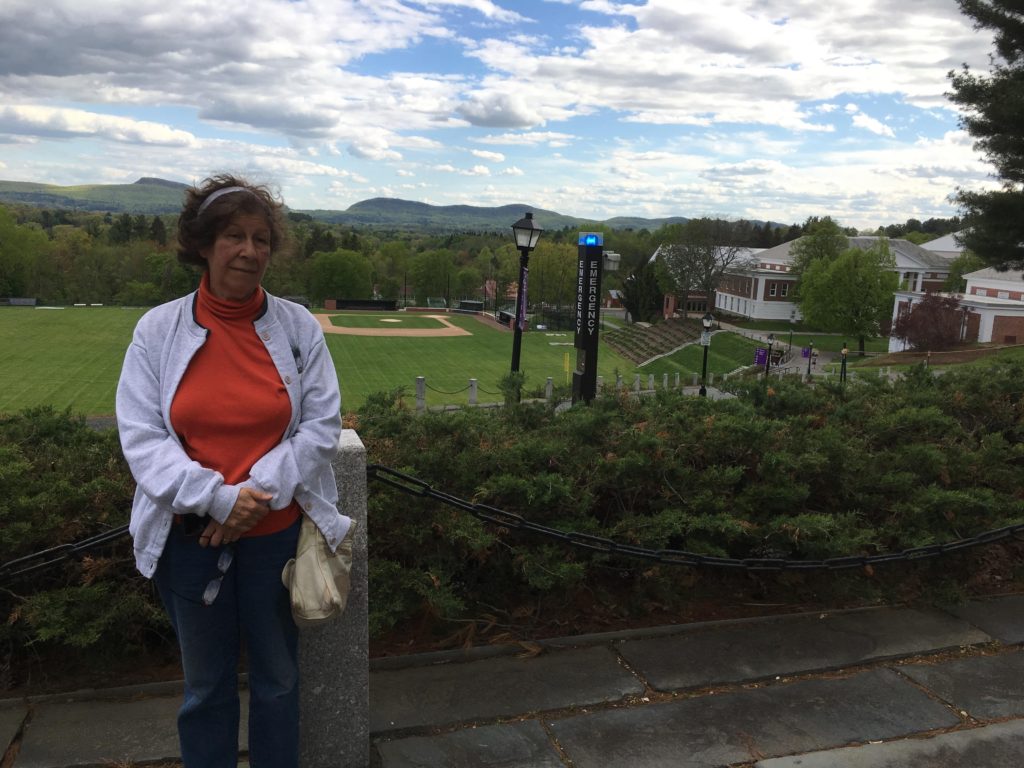
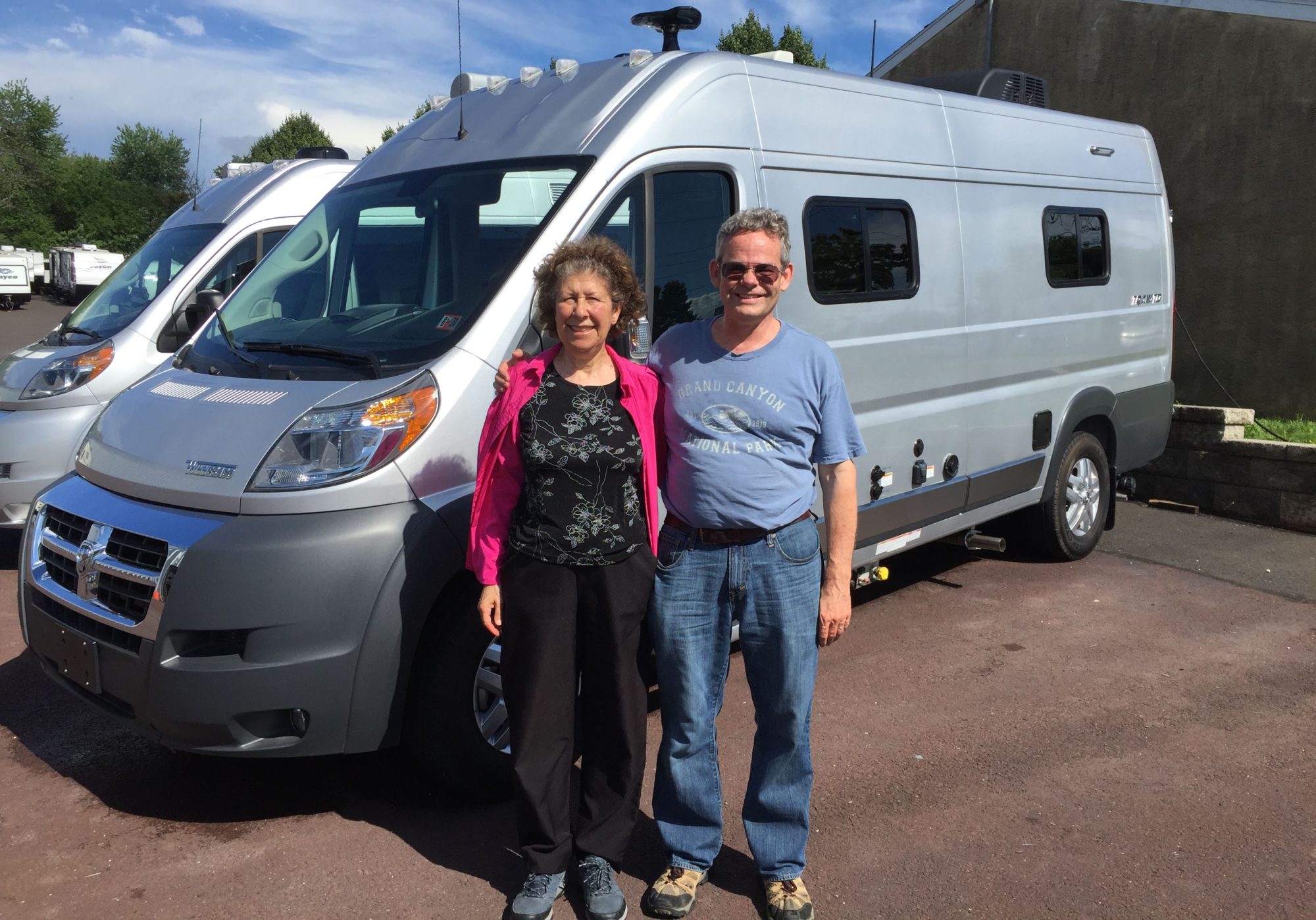
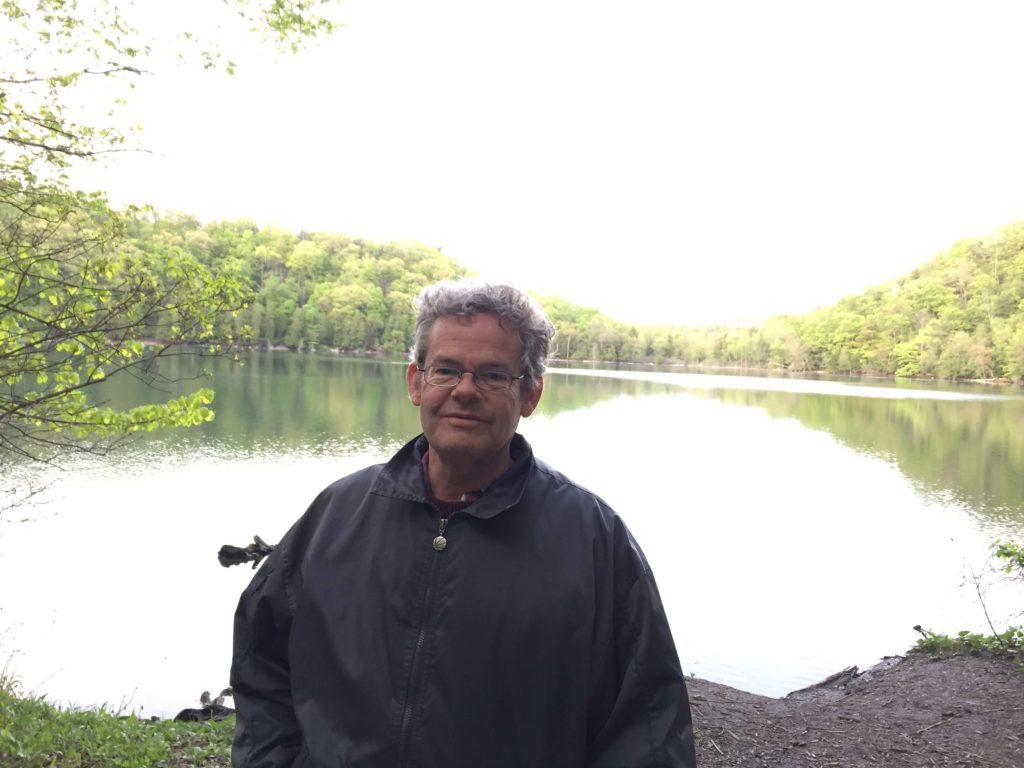
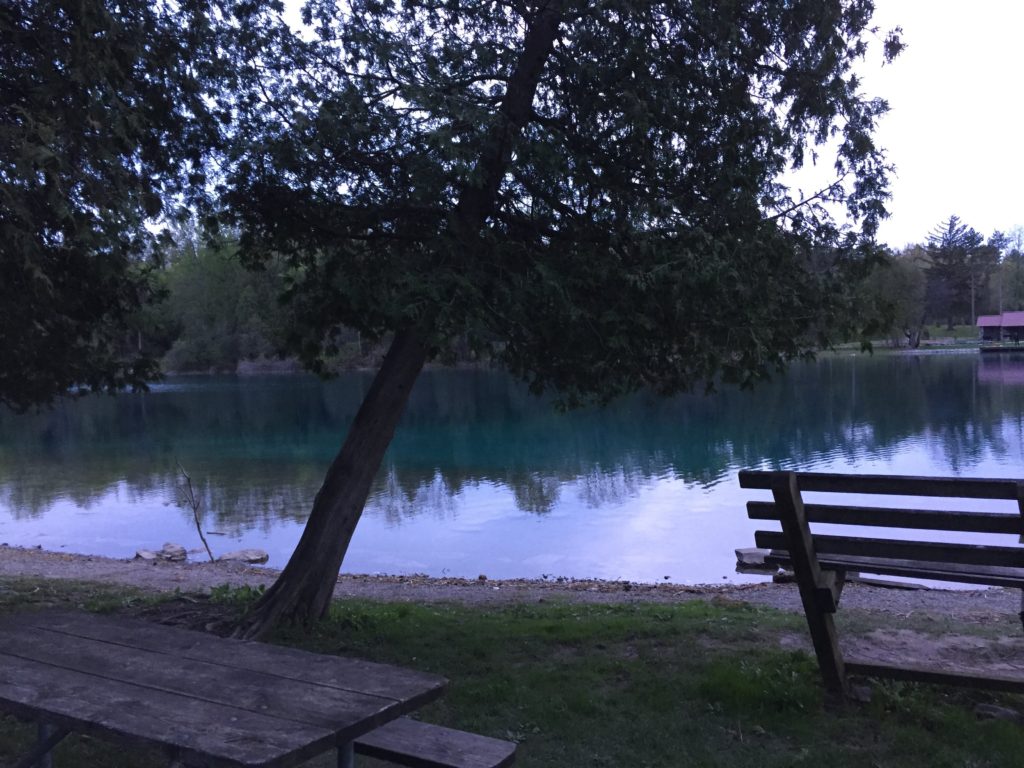
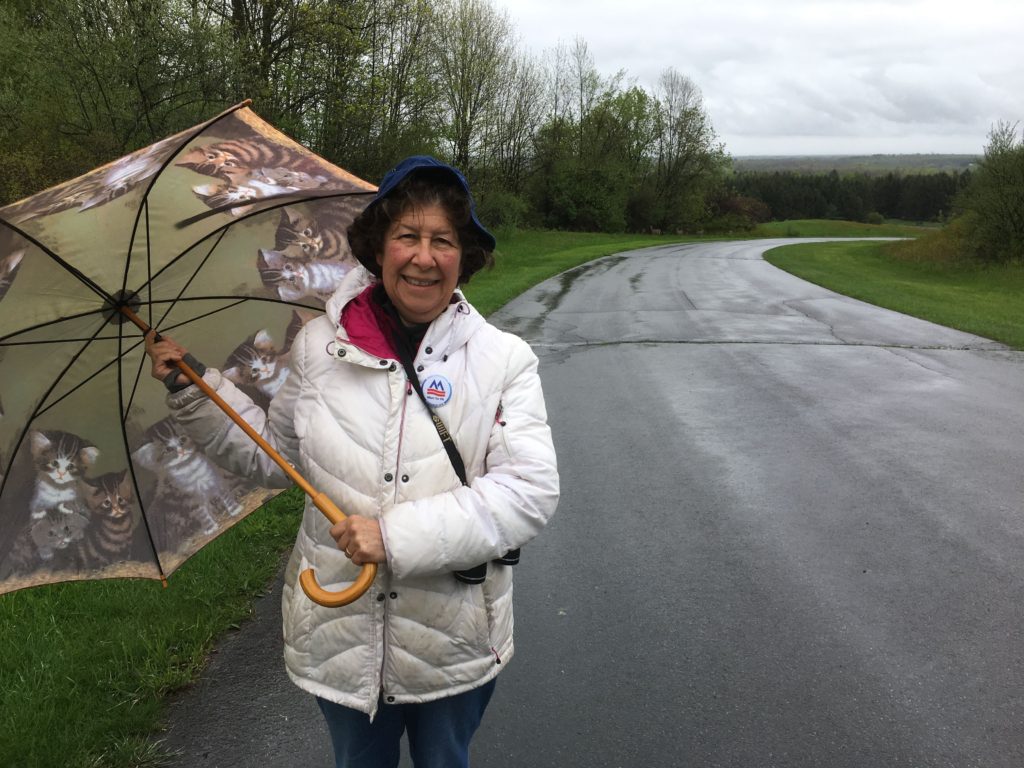
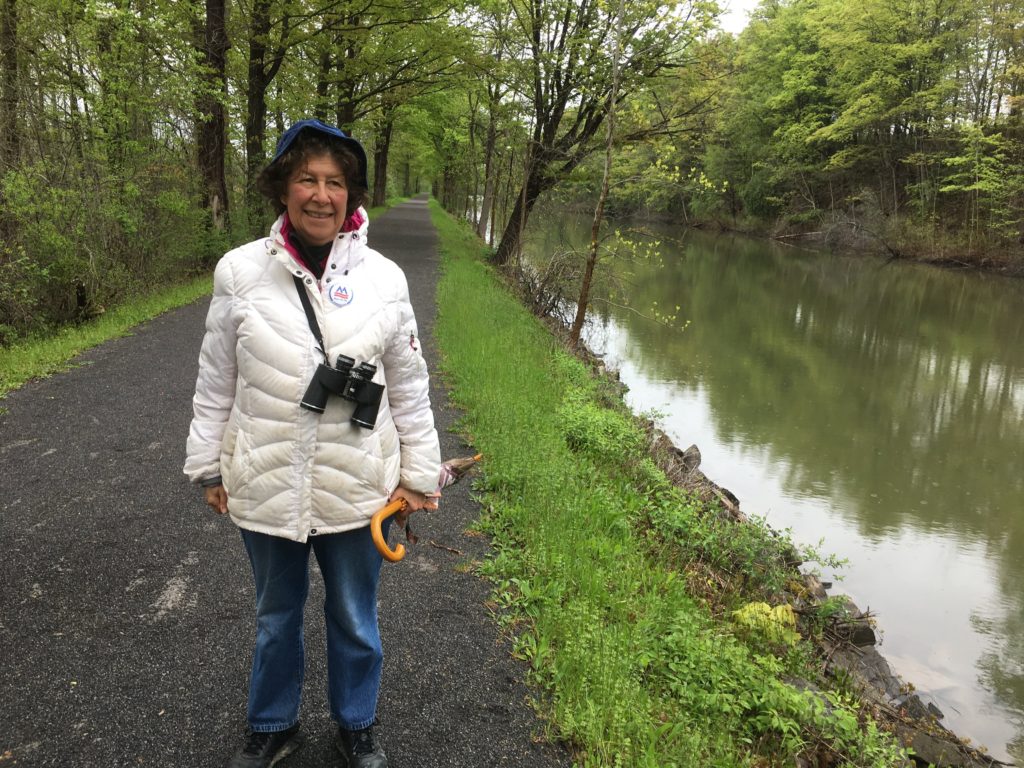
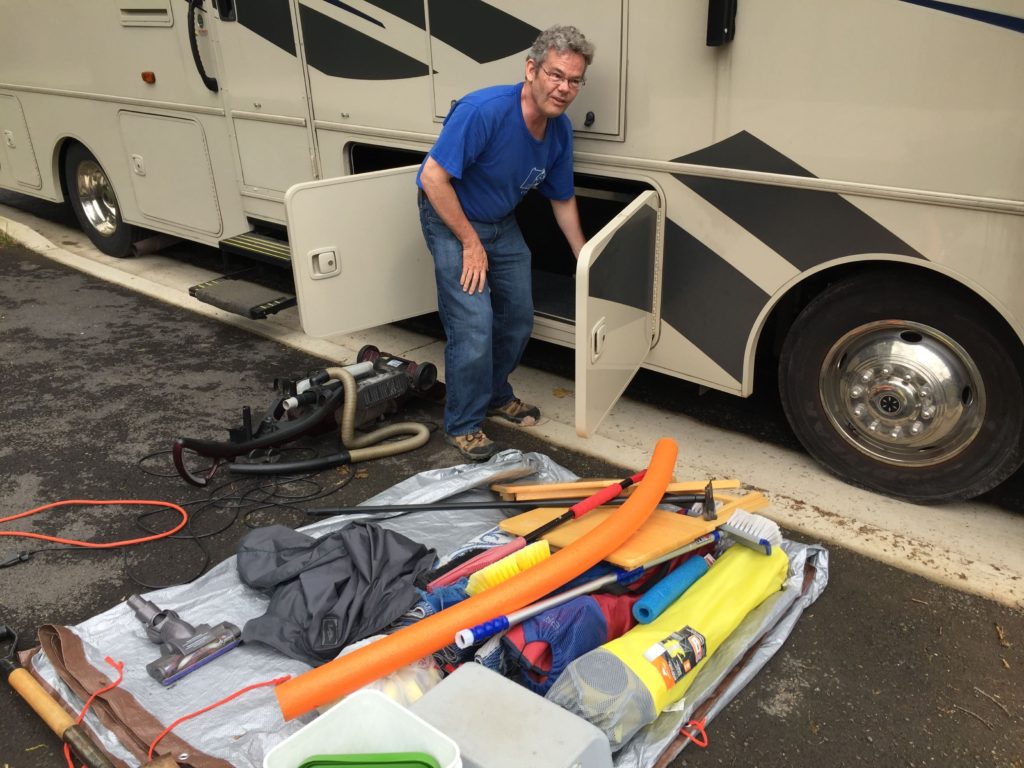
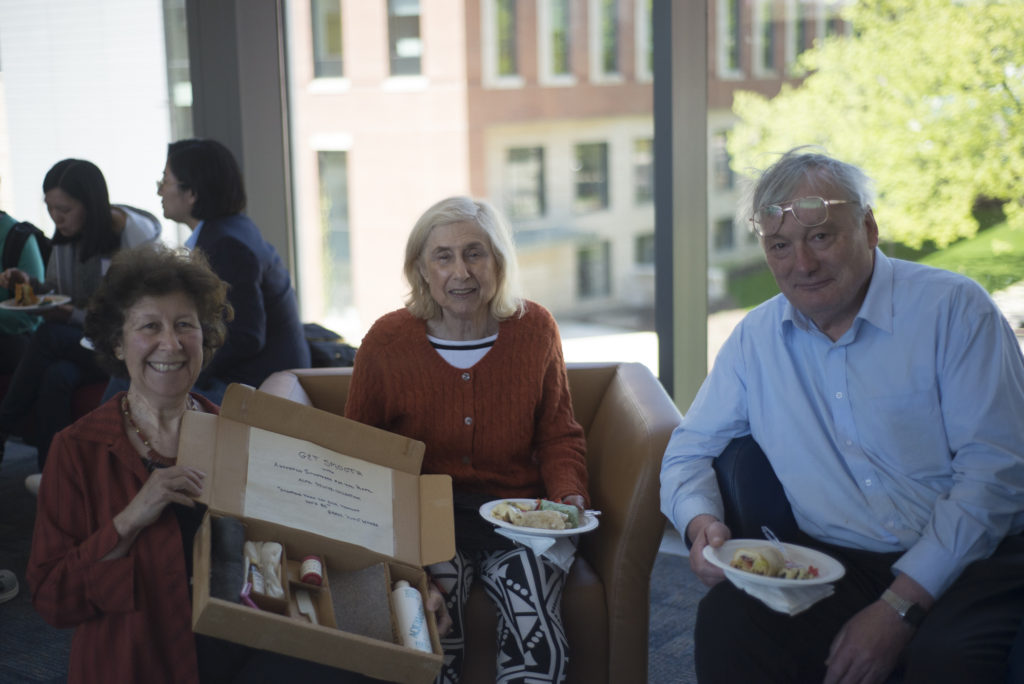
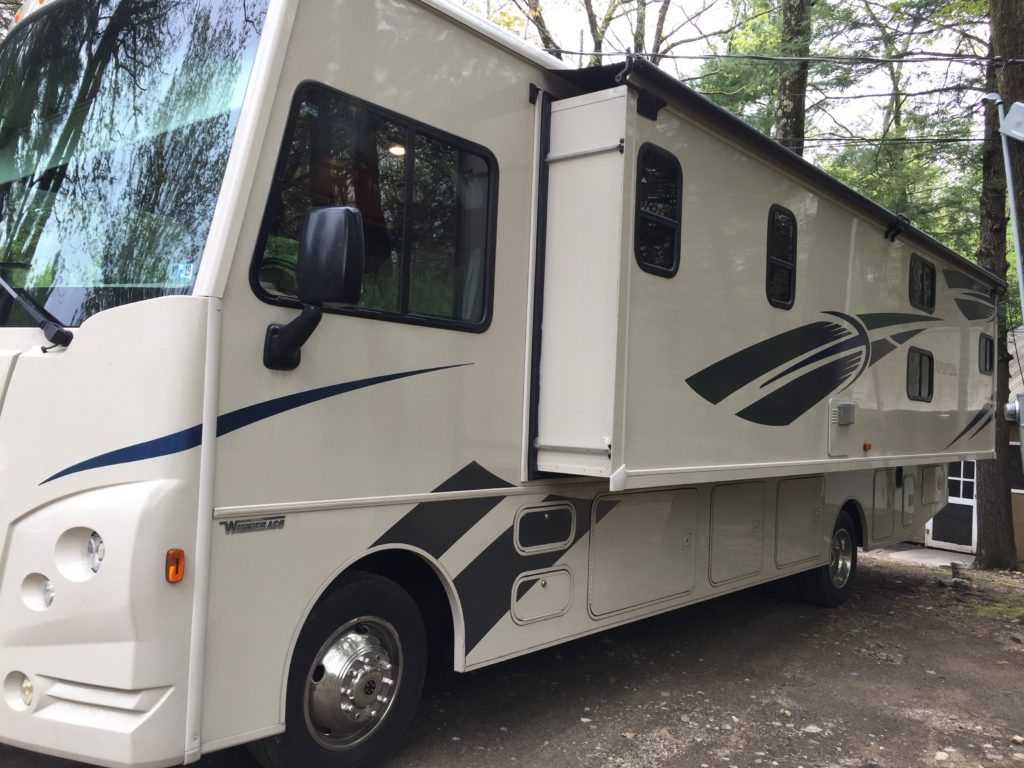
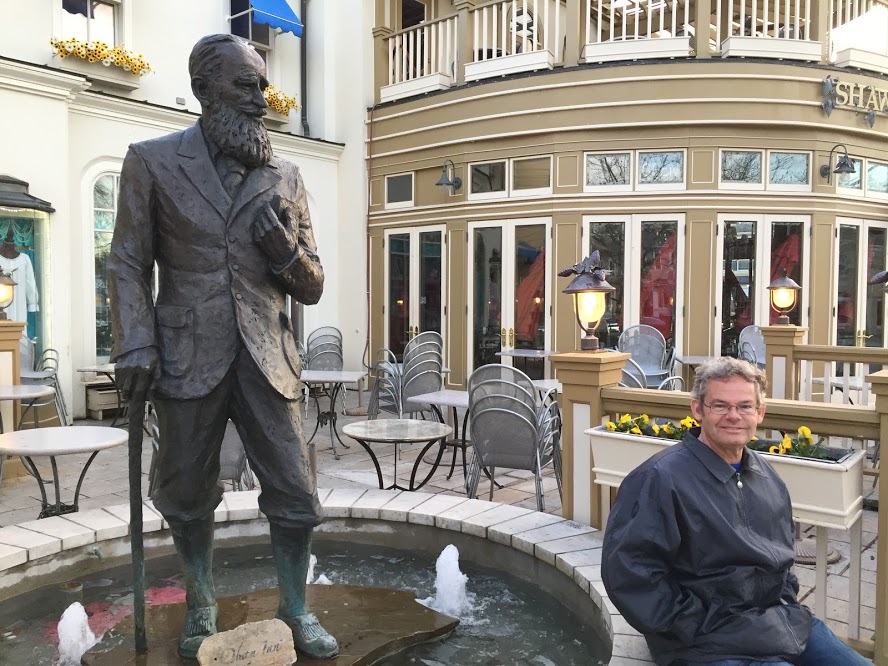


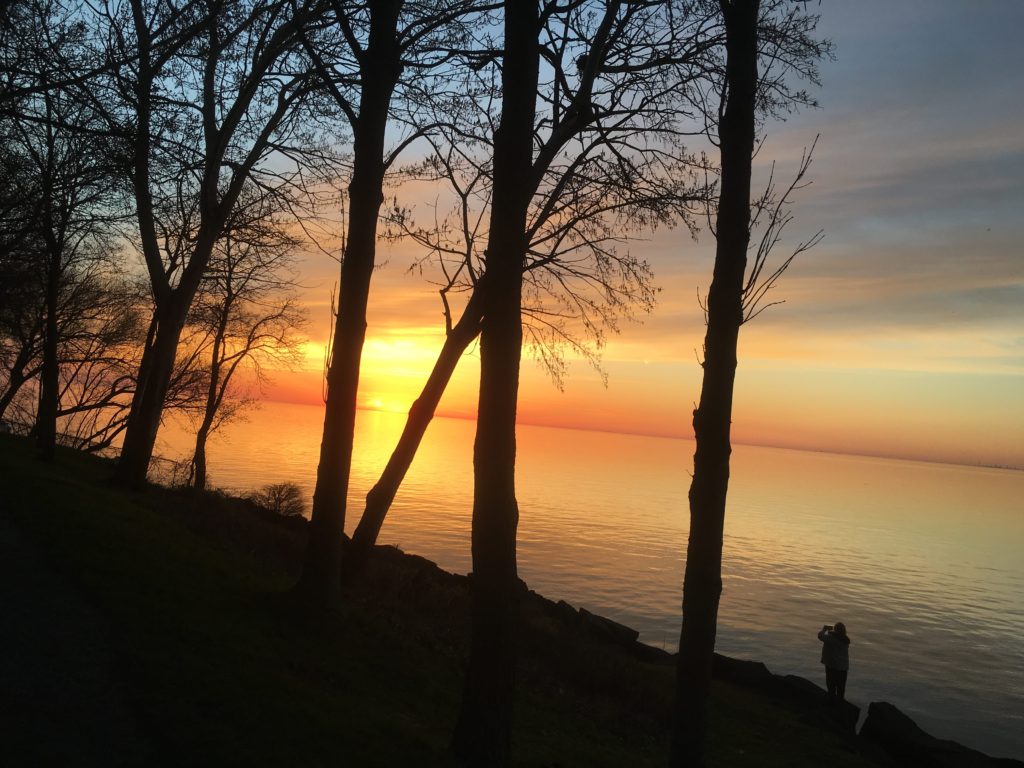
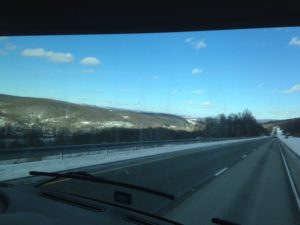 The drive from the Shenandoah Valley to State College on Hwy 99 takes you through some of the prettiest scenery in the NE – definitely equal to the more famous Blue Ridge and Skyline Drive in my opinion – especially the stretch from Everett to State College, which is just under Bald Eagle Ridge. (The ridge might have a different name south of Tyrone.)
The drive from the Shenandoah Valley to State College on Hwy 99 takes you through some of the prettiest scenery in the NE – definitely equal to the more famous Blue Ridge and Skyline Drive in my opinion – especially the stretch from Everett to State College, which is just under Bald Eagle Ridge. (The ridge might have a different name south of Tyrone.) We decided to get an early start so we could go to the house to unload perishables and items that might suffer in the cold before putting the RV in its resting place. Here is part of the result of the first day of unpacking.
We decided to get an early start so we could go to the house to unload perishables and items that might suffer in the cold before putting the RV in its resting place. Here is part of the result of the first day of unpacking.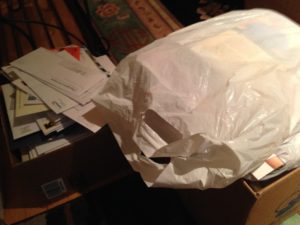 As well, we picked up our mail – essentially everything that arrived from September through Dec. 15.
As well, we picked up our mail – essentially everything that arrived from September through Dec. 15. Then it was back to the storage place where we backed the RV into a mulch bin, where it is partially protected from the weather.
Then it was back to the storage place where we backed the RV into a mulch bin, where it is partially protected from the weather.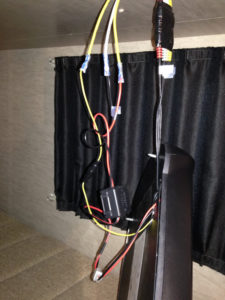
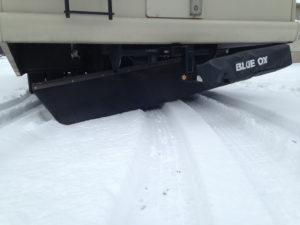 As well, a connector for the the mud guard which Chuck had so carefully installed in Tucson snapped. So, as usual, we have some damage to fix – although these problems are our fault.
As well, a connector for the the mud guard which Chuck had so carefully installed in Tucson snapped. So, as usual, we have some damage to fix – although these problems are our fault.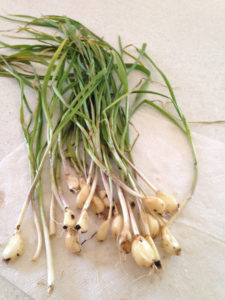




 A unique feature of the cavern in the Stalagpipe Organ. This is an xylophone, whose keys are stalactites. It is controlled by this “organ”, but the keys activate the little hammers as can be seen in the center of the picture below.
A unique feature of the cavern in the Stalagpipe Organ. This is an xylophone, whose keys are stalactites. It is controlled by this “organ”, but the keys activate the little hammers as can be seen in the center of the picture below.  It is an amazing instrument, but I do worry that the constant vibration of the formation will lead to crystal fatigue and ultimately damage to the cave.
It is an amazing instrument, but I do worry that the constant vibration of the formation will lead to crystal fatigue and ultimately damage to the cave. The toy museum has displays of toys from America’s past, with some discussion of how the toy evolved. e.g. doll heads used to be made of bisque (a type of ceramic) so their hair used to be either painted on or wigs. Once plastic heads were developed, synthetic hair could be “rooted” in the scalp.
The toy museum has displays of toys from America’s past, with some discussion of how the toy evolved. e.g. doll heads used to be made of bisque (a type of ceramic) so their hair used to be either painted on or wigs. Once plastic heads were developed, synthetic hair could be “rooted” in the scalp.  On the other hand “talking” dolls were available in 1890. The centerpiece of the display was a large model train set, which was well-done but less interesting to me. However, there was also a model train set (right) that had been entirely hand-crafted by a pediatrician out of balsa wood which I found very interesting.
On the other hand “talking” dolls were available in 1890. The centerpiece of the display was a large model train set, which was well-done but less interesting to me. However, there was also a model train set (right) that had been entirely hand-crafted by a pediatrician out of balsa wood which I found very interesting.
 The car museum had the best collection of antique vehicles we have yet seen, including a horse drawn fire truck with a steam-powered water pump (left) and many unique carriages, coaches, sledges, carts and buggies. The stage cage below could hold 20 passengers + luggage (although most of the passengers sat on the outside at roof level. This photo also shows a child’s cart which was pulled by two goats (the small white vehicle) and a woman pushing a vintage baby carriage. The museum also had a fine collection of very old luxury cars, many with wooden chassis and leather and brass trim and car motors. Finally, it had a lot of interesting miscellanea.
The car museum had the best collection of antique vehicles we have yet seen, including a horse drawn fire truck with a steam-powered water pump (left) and many unique carriages, coaches, sledges, carts and buggies. The stage cage below could hold 20 passengers + luggage (although most of the passengers sat on the outside at roof level. This photo also shows a child’s cart which was pulled by two goats (the small white vehicle) and a woman pushing a vintage baby carriage. The museum also had a fine collection of very old luxury cars, many with wooden chassis and leather and brass trim and car motors. Finally, it had a lot of interesting miscellanea. The museum also had a small display of very old toys and of quilts. I liked this cabinet for embroidery and quilting thread that was used for store display.
The museum also had a small display of very old toys and of quilts. I liked this cabinet for embroidery and quilting thread that was used for store display.



 The main building houses a display of department store animated figures. When I was a child, the big department stores in Toronto were Eatons and Simpsons.
The main building houses a display of department store animated figures. When I was a child, the big department stores in Toronto were Eatons and Simpsons.  They were on opposite corners of two of the downtown streets, Yonge and Queen. Every Christmas, after the Santa Claus parade, they would convert their street-side display windows to large animated displays of fairy-tales, nursery rhymes or children’s songs.
They were on opposite corners of two of the downtown streets, Yonge and Queen. Every Christmas, after the Santa Claus parade, they would convert their street-side display windows to large animated displays of fairy-tales, nursery rhymes or children’s songs.  We always made a special trip downtown to see these displays. The “Main Street of Yesteryear” exhibit was a small selection of these animations, including Cinderella, a huge 3-ring circus that was once a Macy’s display, a castle, and more. As for the displays in Toronto – Simpsons and Eatons are no more, and the street-level shops have been replaced by the Eaton Centre, which is mostly underground (and much warmer at Christmas).
We always made a special trip downtown to see these displays. The “Main Street of Yesteryear” exhibit was a small selection of these animations, including Cinderella, a huge 3-ring circus that was once a Macy’s display, a castle, and more. As for the displays in Toronto – Simpsons and Eatons are no more, and the street-level shops have been replaced by the Eaton Centre, which is mostly underground (and much warmer at Christmas).

 The views from both Shenandoah and Luray Valleys is lovely. This is the ridge and valley system, and the mountain ridges go on for miles. Here is the view looking towards the campground.
The views from both Shenandoah and Luray Valleys is lovely. This is the ridge and valley system, and the mountain ridges go on for miles. Here is the view looking towards the campground.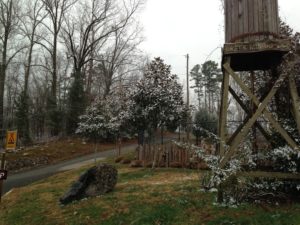 It snowed all morning. The snow stuck to the trees and grass, making the scene very wintery and lovely. Since the daytime temperatures were in the mid 30s, we were not too worried about road conditions. However, laundry and winterizing took most of the daylight hours and so we stayed tucked in to the RV.
It snowed all morning. The snow stuck to the trees and grass, making the scene very wintery and lovely. Since the daytime temperatures were in the mid 30s, we were not too worried about road conditions. However, laundry and winterizing took most of the daylight hours and so we stayed tucked in to the RV.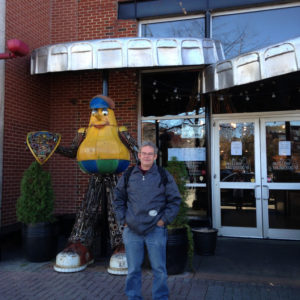
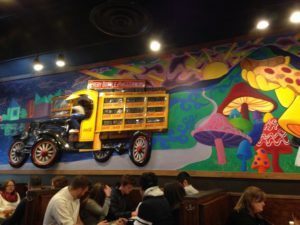 By taking a wrong turn, we ended up back downtown beside the aquarium and decided to have lunch there. We ended up eating at the Mellow Mushroom, a pizza chain with an Alice in Wonderland theme. The awnings over Chuck’s head are giant Coke bottle caps. We liked the seasonings on our pizza, but found it a bit too greasy and cheesy to make our “great pizza” list. (Did I mention the great pizza in Tucson?)
By taking a wrong turn, we ended up back downtown beside the aquarium and decided to have lunch there. We ended up eating at the Mellow Mushroom, a pizza chain with an Alice in Wonderland theme. The awnings over Chuck’s head are giant Coke bottle caps. We liked the seasonings on our pizza, but found it a bit too greasy and cheesy to make our “great pizza” list. (Did I mention the great pizza in Tucson?)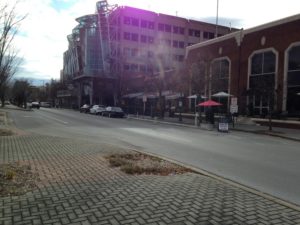 Never mind the cold windy weather – Chattanoogans clearly love to climb outside.
Never mind the cold windy weather – Chattanoogans clearly love to climb outside. 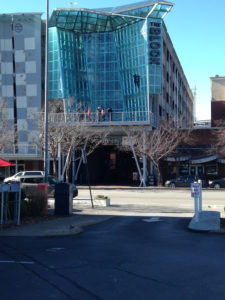
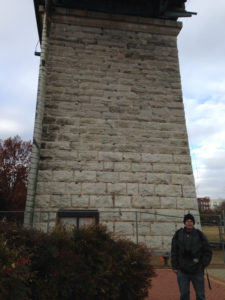 In fact, besides the climb up the outside of the parking garage, we discovered that one of the pillars of the Walnut Street Bridge has been made into a climbing well. But don’t come to Chattanooga expecting to climb the bridge just any day. The bridge climb is special event only.
In fact, besides the climb up the outside of the parking garage, we discovered that one of the pillars of the Walnut Street Bridge has been made into a climbing well. But don’t come to Chattanooga expecting to climb the bridge just any day. The bridge climb is special event only.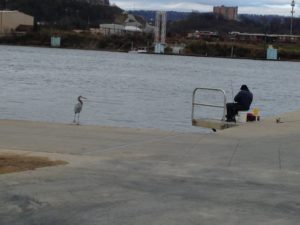
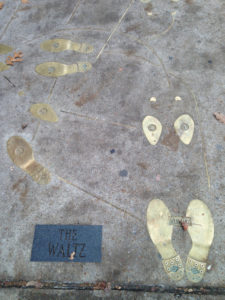 We then drove across to the other side of the river, which we had not done on our previous visit. It also has a bit of a shopping district, as well as a river walk. Perhaps it is the party or the musical side of town. In any case, embedded into the sidewalk are several dance lessons, like this one for the waltz. If you know an appropriate tune, you can learn to dance right there on the street!
We then drove across to the other side of the river, which we had not done on our previous visit. It also has a bit of a shopping district, as well as a river walk. Perhaps it is the party or the musical side of town. In any case, embedded into the sidewalk are several dance lessons, like this one for the waltz. If you know an appropriate tune, you can learn to dance right there on the street!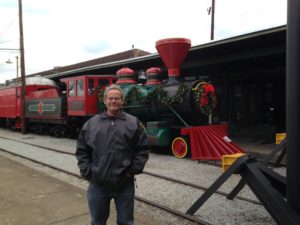
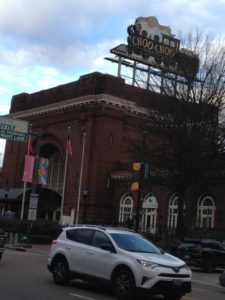
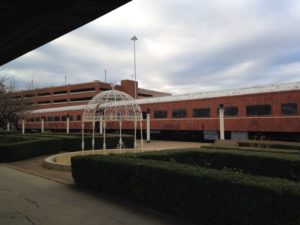 Chattanooga was an important rail junction for almost a century starting in 1850. It was an important north/south connector, and because of this played an important (and to me confusing) part in the Civil War. In any case, after the war there was a rapid expansion of the rail lines and Chattanooga’s role as a rail hub. The current Chattanooga Choo-Choo Hotel is the 3rd reincarnation of the station and was built in 1909. Its life as a train station ended in 1970, and in 1973 it reopened as a hotel.. The station itself, which is large and ornate in the style of the day, is a conference center with hotels, bars and open space. The rail tracks into the station are filled with old passenger cars that have been converted into the hotel rooms. These are open only to guests, but we were intrigued and would like to stay there some time. There is also a more conventional wing that looks like a motel. Finally, where the main platform would have been, there is a long formal rose garden (although December is not the right month to enjoy roses in Chattanooga). A temporary and very well-populated ice skating rink had been set up between the platform and the station.
Chattanooga was an important rail junction for almost a century starting in 1850. It was an important north/south connector, and because of this played an important (and to me confusing) part in the Civil War. In any case, after the war there was a rapid expansion of the rail lines and Chattanooga’s role as a rail hub. The current Chattanooga Choo-Choo Hotel is the 3rd reincarnation of the station and was built in 1909. Its life as a train station ended in 1970, and in 1973 it reopened as a hotel.. The station itself, which is large and ornate in the style of the day, is a conference center with hotels, bars and open space. The rail tracks into the station are filled with old passenger cars that have been converted into the hotel rooms. These are open only to guests, but we were intrigued and would like to stay there some time. There is also a more conventional wing that looks like a motel. Finally, where the main platform would have been, there is a long formal rose garden (although December is not the right month to enjoy roses in Chattanooga). A temporary and very well-populated ice skating rink had been set up between the platform and the station.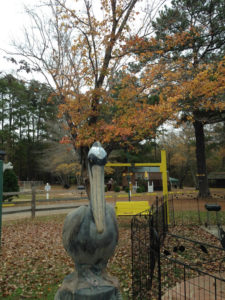 We set off on another cool and cloudy day. After the dry heat of the southwest, it seems remarkable to see ponds, creeks and mixed conifer and deciduous forest. In fact, this part of Louisiana looks much like the NE, except that the winter season is not as far advanced (by which I mean that some of the deciduous trees still have green or yellow leaves).
We set off on another cool and cloudy day. After the dry heat of the southwest, it seems remarkable to see ponds, creeks and mixed conifer and deciduous forest. In fact, this part of Louisiana looks much like the NE, except that the winter season is not as far advanced (by which I mean that some of the deciduous trees still have green or yellow leaves).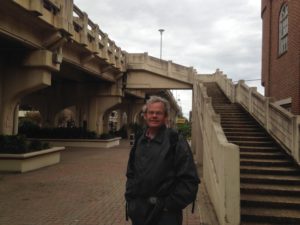 Since we had only the next day to see Shreveport, we decided to forego any “attractions” and head straight downtown. The Red River runs through downtown Shreveport and separates it from the town of Bossier. Texas St. is the main street of Shreveport, and the Texas St. Bridge is an old iron bridge that links the two cities. It can be walked, but we actually walked under it and drove over it.
Since we had only the next day to see Shreveport, we decided to forego any “attractions” and head straight downtown. The Red River runs through downtown Shreveport and separates it from the town of Bossier. Texas St. is the main street of Shreveport, and the Texas St. Bridge is an old iron bridge that links the two cities. It can be walked, but we actually walked under it and drove over it.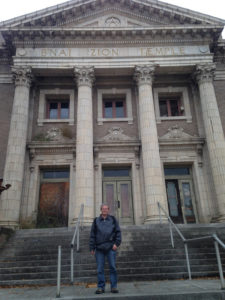 The first building we noticed entering Shreveport is this old synagogue. It is clearly no longer being used, and it is not clear what its fate will be. According to a historic marker, it has 10 beautiful stained glass windows, which still seem to be intact. However, most of the building is boarded up and the view through a lower window showed an interior full of garbage. There was also no hint of where the congregation currently resides.
The first building we noticed entering Shreveport is this old synagogue. It is clearly no longer being used, and it is not clear what its fate will be. According to a historic marker, it has 10 beautiful stained glass windows, which still seem to be intact. However, most of the building is boarded up and the view through a lower window showed an interior full of garbage. There was also no hint of where the congregation currently resides.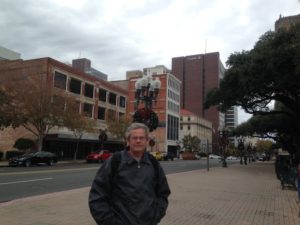 The main street is a typical main street with shops, restaurants and a few government buildings, including the large “parish” (i.e. county) courthouse. However, just off the main street things do not look so rosy. Most of the buildings are boarded up and falling down. The exception is the Strand Theatre, which has some interesting architecture and lots of billboards for upcoming events. The neighborhood looks rather scary, though, and I am not sure how I would feel about being there at night.
The main street is a typical main street with shops, restaurants and a few government buildings, including the large “parish” (i.e. county) courthouse. However, just off the main street things do not look so rosy. Most of the buildings are boarded up and falling down. The exception is the Strand Theatre, which has some interesting architecture and lots of billboards for upcoming events. The neighborhood looks rather scary, though, and I am not sure how I would feel about being there at night.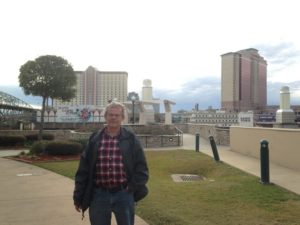 We walked down Texas St. to the start of the bridge, and then continued below the bridge into the tourist district. Here there are a lot of casinos and restaurants. As you reach the river, there is a path which takes you along the river bank and past the Aquarium, Space Museum and Science Museum, as well as some small gardens.
We walked down Texas St. to the start of the bridge, and then continued below the bridge into the tourist district. Here there are a lot of casinos and restaurants. As you reach the river, there is a path which takes you along the river bank and past the Aquarium, Space Museum and Science Museum, as well as some small gardens.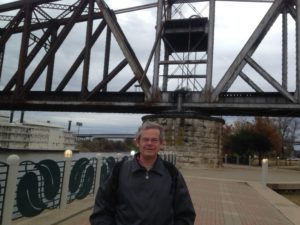
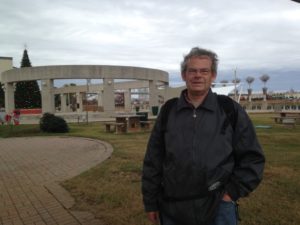 There were quite a few floral and leaf motifs, which might be related to the fact that Shreveport is home to a major rose breeder. The development quickly peters out, however, so we decided to drive across the bridge and visit Bossier.
There were quite a few floral and leaf motifs, which might be related to the fact that Shreveport is home to a major rose breeder. The development quickly peters out, however, so we decided to drive across the bridge and visit Bossier.